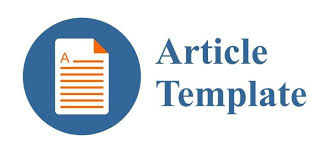SYNCHRONIC AND DIACHRONIC APPROACHES TO THE STUDY OF WF
Teshaboyeva Nafisa Zubaydulla qizi
Jizzakh branch of the National University of Uzbekistan named after Mirzo Ulugbek The Faculty of Psychology, the department of Foreign languages Philology and foreign languages Scientific advisor
Boltaboyeva Dildora Ozodbek qizi
Jizzakh branch of the National University of Uzbekistan named after Mirzo Ulugbek The Faculty of Psychology, the department of Foreign languages Philology and foreign languages Student of group
##semicolon## Word formation, synchronic approach, diachronic approach, semantic relations.
सार
This article is about approaches and will give a definition for word formation, synchronic approaches, diachronic approaches, differences between synchronic and diachronic approaches and their similarities and provide some examples. In the 19th century, linguists concentrated on a language's historical features. Their primary focus was on analyzing various languages, how they have evolved over time, and classifying them into language families based on their shared ancestry. This entire field of study falls under diachronic linguistics.
##submission.citations##
Arnold. 1. The English Word. Moscow. 1986.
Gaybullayeva, N. D. K., & Kizi, T. N. Z. (2022). THE ROLE OF INNOVATIVE METHODS FOR LISTENING COMPREHENSION IN TEACHING LANGUAGE LEARNERS FOREIGN LANGUAGES AND MAINLY ENGLISH. Central Asian Research Journal for Interdisciplinary Studies (CARJIS), 2(10), 8-10.
Lipka, L. English Lexicology. Tubingen: Narr. 2002.
Punga L. Words about words. An introduction to English Lexicology. 2007.
R. S. Ginzburg , S. S. Khidekel, G. Y. Knyazeva, A. A. SankinA COURSE IN MODERN ENGLISH LEXICOLOGY SECOND EDITION Revised and Enlarged
Teshaboyeva, N., & Mamayoqubova, S. (2020). COMMUNICATIVE APPROACH TO LANGUAGE TEACHING. In МОЛОДОЙ ИССЛЕДОВАТЕЛЬ: ВЫЗОВЫ И ПЕРСПЕКТИВЫ (pp. 409-414).
Teshaboyeva, N. (2020). LINGUISTIC PERSONALITY, ITS STRUCTURAL CHARACTERISTICS IN THE NEW PERSPECTIVE DIRECTIONS. In МОЛОДОЙ ИССЛЕДОВАТЕЛЬ: ВЫЗОВЫ И ПЕРСПЕКТИВЫ (pp. 415-420).
Teshaboyeva, N. Z. (2019). TEACHING ENGLISH THROUGH LITERATURE INTESL AND TEFL CLASSROOMS. In СОВРЕМЕННЫЕ ТЕХНОЛОГИИ: АКТУАЛЬНЫЕ ВОПРОСЫ, ДОСТИЖЕНИЯ И ИННОВАЦИИ (pp. 82-84).
Teshaboyeva, N. (2023). THE IMPORTANCE OF TOURISM IN PRESENT DAY. Журнал иностранных языков и лингвистики, 5(5).
Teshaboyeva, N. (2023). THE MODERN INNOVATIVE TECHNOLOGIES IN TEACHING FOREIGN LANGUAGES. Журнал иностранных языков и лингвистики, 5(5).
Teshaboyeva, N. Z. (2023, November). Adjective word group and its types. In " Conference on Universal Science Research 2023" (Vol. 1, No. 11, pp. 59-61).
Teshaboyeva, N. Z. (2023, November). Modifications of Consonants in Connected speech. In " Conference on Universal Science Research 2023" (Vol. 1, No. 11, pp. 7-9).
Teshaboyeva, N., & Rayimberdiyev, S. (2023, May). THE IMPORTANCE OF USING MULTIMEDIA TECHNOLOGY IN TEACHING ENGLISH CLASSES. In Academic International Conference on Multi-Disciplinary Studies and Education (Vol. 1, No. 8, pp. 149-153).
Nafisa, T., & Marina, S. (2023). TEACHING AND LEARNING OF ENGLISH VOCABULARY IN TESL AND TEFL CLASSROOMS. International Journal of Contemporary Scientific and Technical Research, 465-469.





